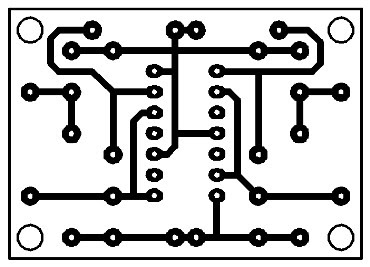Debounced Pulse Generator Circuit Diagram
Debounced Pulse Generator.
Microprocessor systems normally require definite control signals or pulses to be able to respond correctly. Mostly, these signals are debounced first before they are introduced to processing systems.
 |
| Debounced Pulse Generator Circuit Diagram |
Debounced Pulse Generator
Microprocessor systems normally require definite control signals or pulses to be able to respond correctly. Mostly, these signals are debounced first before they are introduced to processing systems.
If, however, this control signal or pulse is produced with mechanical devices (like pressing a button or key), the ordinary flip-flop debounce circuits sometimes are not sufficient.
It could happen that the key is released too early and the system does not recognize the control pulse.
The switch might also vibrate and produce a burst of pulses which may be falsely interpreted by the processor.
The circuit presented here is a debounced pulse generator. It creates a single pulse which is independent from the length of time the input button is pressed.
The pulsewidth triggered by button S1 is determined by the components R3,R4 and C1.
The components R5, R6 and C2 are responsible for shaping the pulse width triggered by button S2.
Button switch S1 controls output 1 while the button S2 controls output 2. When a key or button is pressed, the corresponding output will deliver a single "0" (or low) logic pulse with a constant pulsewidth.
The debounced pulse generator outputs a single pulse with a constant pulse width no matter what form the input pulse (or pulse burst) has.




